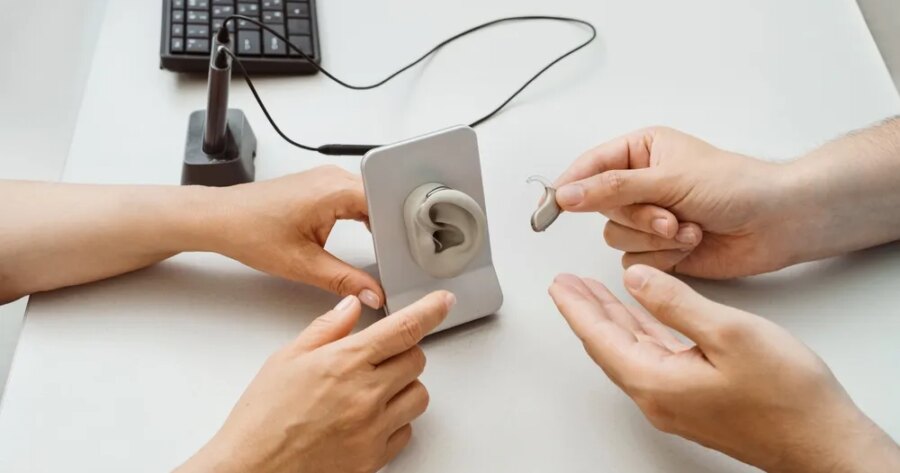Hearing aids have come a long way in recent years, evolving from basic amplification devices to sophisticated pieces of technology capable of delivering highly personalized auditory experiences. As we approach 2025, the world of hearing aids is undergoing a revolution, driven by advancements in sound technology that are improving not just the quality of hearing, but also the lifestyle and independence of users. Explore the key advancements in hearing aid technology, including artificial intelligence, connectivity, and comfort, and discuss what we can expect for the future of hearing aids.
Smarter Hearing Aids with Artificial Intelligence
One of the most exciting developments in hearing aid technology is the integration of artificial intelligence (AI). AI-powered hearing aids have the ability to adapt and adjust automatically to different sound environments, providing users with a more intuitive and comfortable listening experience. These hearing aids can learn the user’s preferences over time and make adjustments without needing manual input.
Some of the latest hearing aids also incorporate machine learning algorithms that enable them to “hear” and distinguish between different types of sounds. This not only improves the quality of sound but also enhances the ability to focus on specific voices or sounds, making social interactions much easier and more enjoyable.
Connectivity and Integration with Smart Devices
Hearing aids are becoming more connected than ever before. In 2025, many hearing aids will offer seamless integration with smartphones, televisions, smart home devices, and other Bluetooth-enabled products. This connectivity allows users to control their hearing aids with ease, adjusting settings via an app on their phone or tablet. Some devices even allow users to stream audio directly to their hearing aids, eliminating the need for additional accessories like neckloops or Bluetooth streamers.
Comfort and Discreet Design
Hearing aids have evolved significantly in terms of design, with a focus on comfort, aesthetics, and discreetness. In 2025, hearing aids are likely to become even smaller and more discreet, with many models virtually invisible to the naked eye. This will help those who may be self-conscious about wearing hearing aids feel more confident in their appearance.
Furthermore, improvements in comfort are driving more people to wear their hearing aids consistently throughout the day. In addition to smaller, lighter devices, hearing aids will continue to be equipped with features like customizable ear molds or soft silicone tips to ensure a comfortable fit for every user. The materials used in hearing aid construction are also becoming more skin-friendly, reducing irritation and enhancing the overall wearing experience.
Advanced Battery Life and Charging Options
Battery life has always been a concern for hearing aid users, but thanks to advances in technology, this issue is being addressed. In 2025, hearing aids are expected to feature longer-lasting rechargeable batteries, cutting down on the need for frequent battery replacements. Many hearing aids now come with wireless charging stations that make it easy to recharge overnight, similar to how smartphones are charged. This innovation will make hearing aids more convenient and cost-effective over the long term, eliminating the hassle of changing tiny batteries every few days.
Personalized Sound Profiles
The future of hearing aids is also looking more personalized than ever before. Using advanced audiological assessments and software, hearing aids can now be customized to each user’s specific hearing loss pattern, ensuring the best possible hearing experience. Personalized sound profiles allow users to adjust sound frequencies based on their unique needs, which is especially helpful for those with varying degrees of hearing loss.
Health Monitoring Features
In addition to improving hearing, many modern hearing aids now come equipped with health monitoring features, allowing them to serve as multi-purpose devices. These health functions include tracking activity levels, monitoring heart rate, and even detecting falls. In 2025, we expect these features to be even more advanced, with hearing aids offering more comprehensive health tracking. These features can be particularly beneficial for older adults who want to stay on top of their health while enjoying the benefits of improved hearing.
The Future of Hearing Aids – A Revolution in Sound and Accessibility
The advancements in hearing aid technology are nothing short of revolutionary, and 2025 promises even more exciting developments. From AI-powered devices that learn and adapt to user preferences, to better integration with smart devices, longer-lasting batteries, and enhanced comfort, hearing aids are transforming the way people experience sound. With improved accessibility, affordability, and personalization, these devices are making it easier than ever for individuals with hearing loss to engage in everyday life, reconnect with their loved ones, and experience the world in a more vibrant way. Whether for individuals experiencing hearing loss or those looking to enhance their auditory experience, hearing aids are becoming an essential tool for better communication and well-being.





